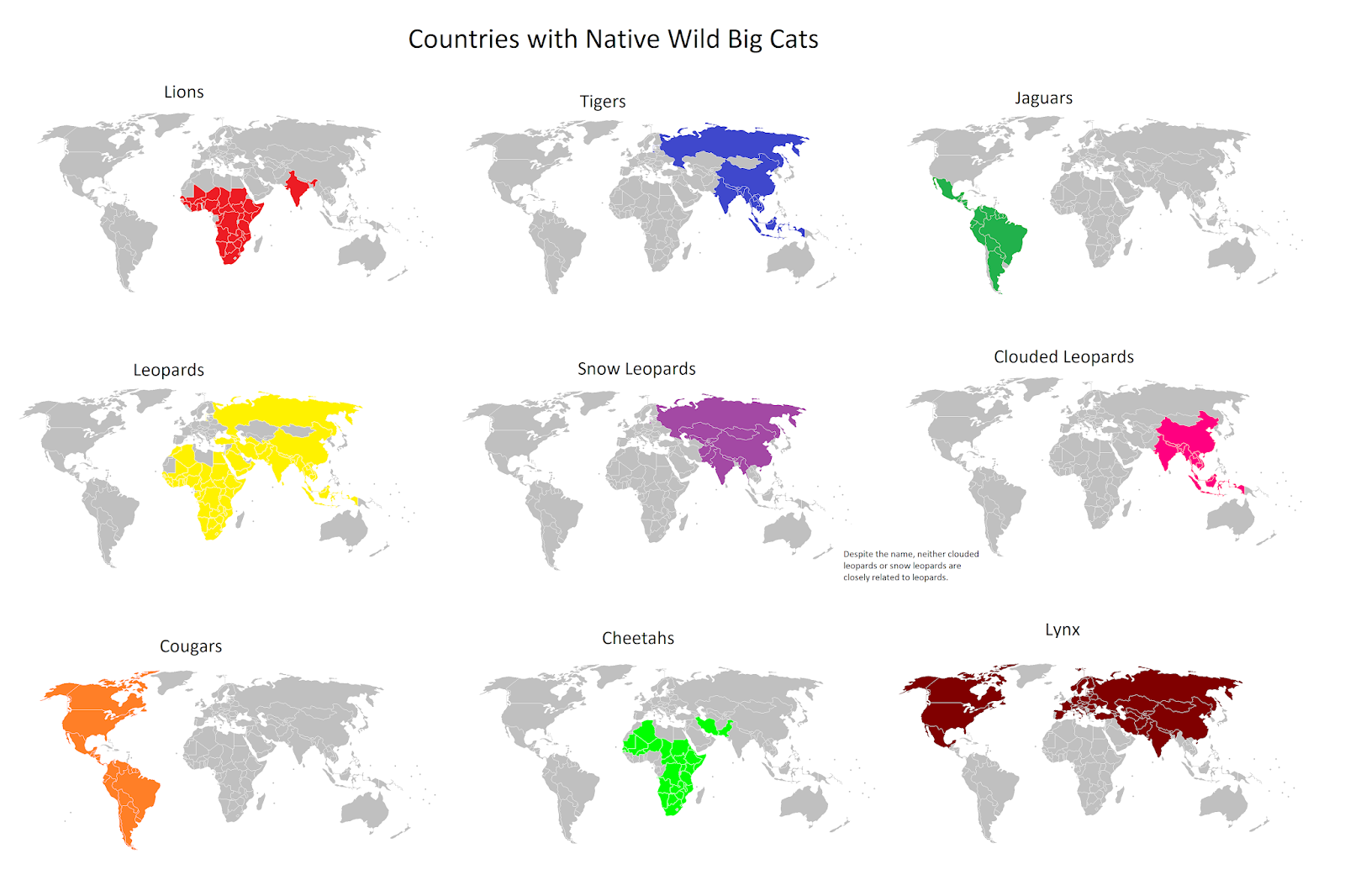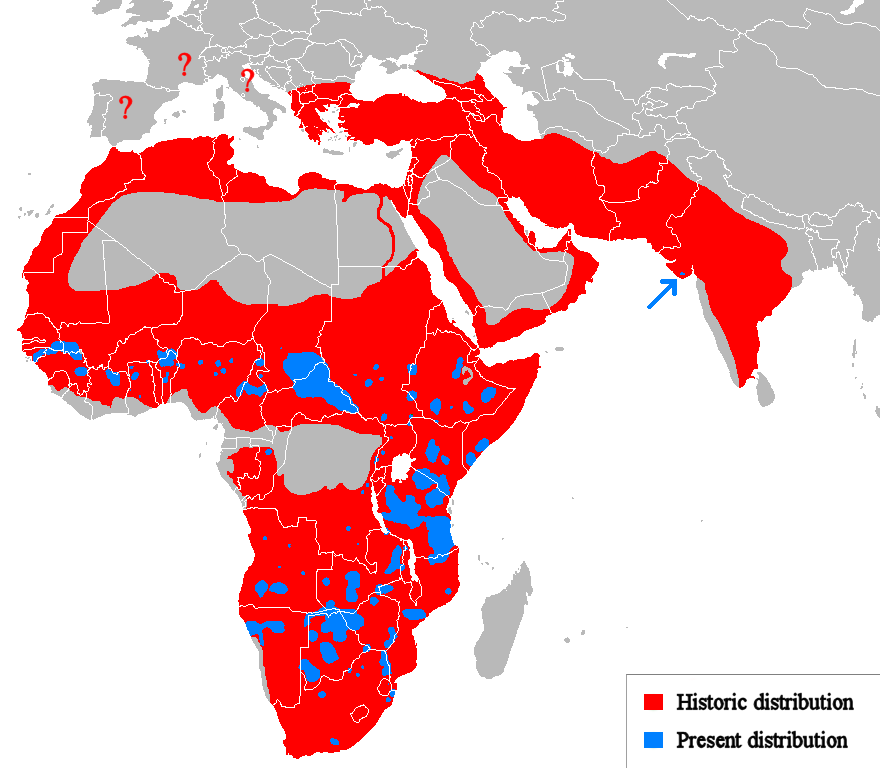Thirty-eight species of cats exist on our planet. Most of them are relatively small.
The term “big cat” is are usually used to relate to any of the five species of the genus Panthera: lion (Panthera leo), tiger (Panthera tigris), jaguar (Panthera onca), leopard (Panthera pardus), and snow leopard (Panthera uncia). Excluding for the snow leopard, these big cat species can roar.
A more extensive explanation of the term covers species outside of Panthera including the cougar (Puma concolor), clouded leopard (Neofelis nebulosa), Sunda clouded leopard (Neofelis diardi), cheetah (Acinonyx jubatus) and even the several lynxes species. But, these added species also do not roar.
Notwithstanding enormous diversity in size, different cat species are pretty alike in both body structure and behaviour, except the cheetah, which significantly stands out from the other big and small cats. All cats are carnivores.
Spatial distribution of the Big Cats
Natural ranges of all big cats cover all landmasses of the earth besides Australia.

www.vividmaps.com
Nations with native wild big cats
The largest number of species of big cats lives in South Asia.
Historic and current geographic spread of lions
Most lions fast declined and dropped by approximately 30 to 50% in the late half of the 20th century.
Estimates reveal that the African lion population is 17-47 thousand living in the wild in 2004. In the last Asian refuge (India) lives just about 400 lions.
Historic and current geographic spread of tigers
The world wild tiger population was estimated 3.1 -4.0 thousand mature individuals (2015), falling from around 100 thousand at the beginning of the 20th century, with largest surviving populations occurring in small territories isolated from each other.
The map below shows the tiger’s historic range in 1900 and 1990.
Historic and current geographic spread of jaguars
The jaguar is the biggest cat species in the Americas and the third-largest after the tiger and the lion. The jaguar’s present range extends from Southwestern U.S. and Mexico over Central America and south to Paraguay and northern Argentina. Though single cats are living within the western U.S., the species has mostly been exterminated from the United States since the early 20th century.
www.vivdidmaps.com
Historic and current geographic distribution of leopards
The leopard has the most widespread distribution of all big cats, occurring broadly in Africa as well as the Caucasus and Asia, although populations are fragmented and declining. It is deemed to be destroyed in North Africa. The most relatively abundant population of leopard exists in the Indian subcontinent.





This post may contain affiliate links. As an Amazon Associate, I earn from qualifying purchases.
Comments
Post a Comment